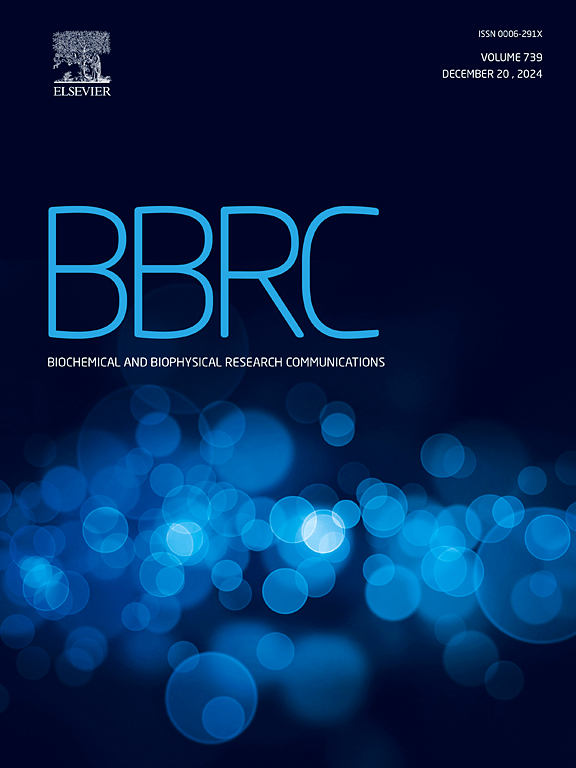PIEZO1-mediated calcium influx transiently alters nuclear mechanical properties via actin remodeling in chondrocytes
IF 2.5
3区 生物学
Q3 BIOCHEMISTRY & MOLECULAR BIOLOGY
Biochemical and biophysical research communications
Pub Date : 2025-01-01
DOI:10.1016/j.bbrc.2024.151135
引用次数: 0
Abstract
Mechanosensation allows cells to generate intracellular signals in response to mechanical cues from their environment. Previous research has demonstrated that mechanical stress can alter the mechanical properties of the nucleus, affecting gene transcription, chromatin methylation, and nuclear mechanoprotection during mechanical loading. PIEZO1, a mechanically gated Ca2+ ion channel, has been shown to be important in sensing mechanical stress, however its signal transduction pathway is not thoroughly understood. In this study, we used primary porcine chondrocytes to determine whether PIEZO1 activation and subsequent Ca2+ influx altered nuclear mechanical properties, and whether these effects involved the actin cytoskeleton. We discovered that activating PIEZO1 with Yoda1, a specific small-molecule agonist, induces transient nuclear softening—a previously identified mechanoprotective response. This PIEZO1-mediated nuclear softening is abolished by inhibiting actin cytoskeleton remodeling with Latrunculin A or by removing extracellular Ca2+. Notably, PIEZO1-mediated nuclear softening did not lead to significant changes in gene expression or heterochromatin methylation. Our findings demonstrate that actin cytoskeleton remodeling following Ca2+ influx facilitates PIEZO1 signal transduction to the nucleus but does not induce lasting gene expression changes.
piezo1介导的钙内流通过肌动蛋白重塑在软骨细胞中短暂改变核力学特性。
机械感觉允许细胞产生细胞内信号,以响应来自环境的机械信号。先前的研究表明,机械应力可以改变细胞核的机械特性,影响基因转录、染色质甲基化和机械加载过程中的核机械保护。PIEZO1是一种机械门控Ca2+离子通道,已被证明在感知机械应力中很重要,但其信号转导途径尚未完全了解。在这项研究中,我们使用原代猪软骨细胞来确定PIEZO1激活和随后的Ca2+内流是否改变了核力学特性,以及这些影响是否涉及肌动蛋白细胞骨架。我们发现,用Yoda1(一种特定的小分子激动剂)激活PIEZO1,可以诱导短暂的核软化——一种先前确定的机械保护反应。这种piezo1介导的核软化是通过抑制肌动蛋白细胞骨架重塑与Latrunculin A或通过去除细胞外Ca2+来消除的。值得注意的是,piezo1介导的核软化没有导致基因表达或异染色质甲基化的显著变化。我们的研究结果表明,Ca2+内流后肌动蛋白细胞骨架重塑促进了PIEZO1信号转导到细胞核,但不会诱导持久的基因表达变化。
本文章由计算机程序翻译,如有差异,请以英文原文为准。
求助全文
约1分钟内获得全文
求助全文
来源期刊
CiteScore
6.10
自引率
0.00%
发文量
1400
审稿时长
14 days
期刊介绍:
Biochemical and Biophysical Research Communications is the premier international journal devoted to the very rapid dissemination of timely and significant experimental results in diverse fields of biological research. The development of the "Breakthroughs and Views" section brings the minireview format to the journal, and issues often contain collections of special interest manuscripts. BBRC is published weekly (52 issues/year).Research Areas now include: Biochemistry; biophysics; cell biology; developmental biology; immunology
; molecular biology; neurobiology; plant biology and proteomics

 求助内容:
求助内容: 应助结果提醒方式:
应助结果提醒方式:


